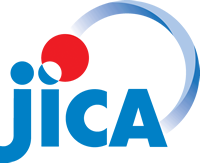Social Media Plasma Communication: Ionized Information Transfer
Imagine if your social media updates could move through plasma channels, carried by ionized particles instead of traditional signals. You'd get information faster and more reliably, especially during crises when networks struggle. This isn’t just theory—it’s a technology that’s starting to change the way platforms share data. But how exactly do these plasma communications work with your favorite apps, and what challenges stand in the way of broader adoption?
The Science Behind Plasma-Based Data Transfer
Plasma-based communication represents an alternative to traditional data transfer methods that typically utilize wires or fiber optics. This approach leverages the properties of ionized gases, which consist of free electrons, to facilitate high-speed data transmission.
In plasma, signals can propagate rapidly through a medium that has relatively low conductivity. One significant aspect of plasma is its capacity to allow electromagnetic waves to travel effectively, even under conditions that might hinder conventional data transfer methods.
The structure of plasma provides a pathway for efficient communication, particularly at terahertz frequencies. This capability can yield high data rates, potentially achieving terabits per second over short distances.
Additionally, the introduction of magnetic fields in plasma-based systems offers the flexibility to direct signals more easily compared to other transmission methods. This feature may enhance the adaptability and efficiency of data transfer systems that utilize plasma as a medium.
Harnessing Ionized Particles for Digital Communication
Conventional data channels primarily utilize electromagnetic waves for communication. However, recent research into ionized particles reveals potential advantages for digital communication. The movement of a significant number of ionized particles at elevated speeds can facilitate reduced latency and increased data transfer rates compared to traditional methods.
In areas like North America, plasma-based communication demonstrates resilience, effectively reducing interference and enhancing the ability to navigate various environmental challenges.
Furthermore, sophisticated models of ionospheric electron content provide the capability to adapt to real-time atmospheric variations. This adaptability is crucial for maintaining the reliability and stability of digital communication channels, particularly in complex environments where conventional methods may struggle.
Technological Integration With Social Media Platforms
As social media platforms advance, the integration of technologies such as plasma-based communication presents opportunities for improved real-time connectivity and information dissemination. By utilizing GNSS (Global Navigation Satellite System) data from smartphones, these platforms are capable of producing precise ionospheric Total Electron Content (TEC) maps and tailoring services to reflect current atmospheric conditions.
Users may experience enhanced navigation and receive timely notifications regarding ionospheric disturbances.
Additionally, when individuals share data on platforms like Twitter or Facebook, they contribute to a more detailed spatial resolution of atmospheric observations, which surpasses the capabilities of traditional monitoring techniques.
This collaborative approach to data sharing not only enhances individual user experiences but also supports community involvement in important scientific research concerning the atmosphere and its changes.
Enhancing Data Transfer Rates and Reliability
Smartphones equipped with the capability to gather data on ionospheric Total Electron Content (TEC) contribute to improved communication reliability and efficiency. By utilizing this data, systems are able to apply corrections for signal errors that arise from fluctuations in electron densities in the ionosphere.
The implementation of dual-frequency GNSS signals on smartphones further enhances this reliability, reducing the inaccuracies typically associated with plasma communications.
When data is aggregated from a large number of smartphones, it enables the creation of high-resolution TEC maps. These maps are instrumental in allowing communication protocols to adjust in real-time, thereby enhancing throughput.
Although GNSS data from smartphones can often be subject to noise, employing averaging techniques helps to yield consistent and accurate ionospheric metrics.
The integration of this ionospheric data ultimately leads to more reliable and efficient information transfer. This is particularly significant in the context of varying atmospheric conditions, as it allows for superior data rates compared to traditional methods that don't incorporate real-time ionospheric corrections.
Addressing Latency and Signal Interference
Plasma communication depends on the transmission of signals through the ionosphere, making it susceptible to latency and signal interference due to variations in electron densities. The total electron content (TEC) is a critical factor that influences the speed and reliability of signal transmission.
As numerous smartphones continuously collect TEC data, this creates an opportunity for high-resolution, real-time monitoring that may help mitigate delays, particularly in densely populated areas.
Accurate modeling of TEC is vital to maintaining communication reliability, as inadequate models can lead to accumulating errors and degraded performance. The ongoing collection of measurements from smartphones allows for rapid adjustments to regional TEC variations, which is important for sustaining effective plasma-based information transfer amid constantly changing ionospheric conditions that can jeopardize signal quality.
Role of GNSS and Ionospheric Mapping in Communication
Reliable plasma communication necessitates precise assessments of Total Electron Content (TEC) in the ionosphere, alongside effective real-time mapping tools. Global Navigation Satellite System (GNSS) signals are particularly sensitive to variations in the ionosphere's TEC, which can affect the reliability of information transfer. The integration of dual-frequency GNSS technology in modern smartphones facilitates the generation of detailed TEC maps. These maps are essential for mitigating radio signal errors and maintaining stable communication connections.
Furthermore, the sharing of TEC data from smartphones is especially beneficial in areas where ground-based monitoring stations are limited. This collective effort enhances both spatial coverage and resolution of ionospheric data.
Although TEC measurements derived from smartphones may exhibit some variability, techniques such as collective averaging and coarse modeling can improve the reliability of these measurements. Consequently, participant contributions are significant for the development of robust communication and navigation systems that depend on accurate ionospheric mapping.
Challenges of Measuring and Utilizing Plasma Channels
Measuring and utilizing plasma channels for communication presents several challenges, primarily due to the dynamic characteristics of the ionosphere. Variations in electron density can lead to disruptions in signal clarity, complicating reliable communication.
While smartphone Global Navigation Satellite System (GNSS) signals facilitate the creation of real-time ionospheric Total Electron Content (TEC) maps, hardware noise can introduce significant inaccuracies—often around 70 TEC Units (TECU), which is considerably higher than what dedicated monitoring stations experience.
The use of distributed sensor networks that leverage millions of smartphones has the potential to enhance spatial resolution, particularly in urban environments. However, issues such as data quality and interference remain significant obstacles to achieving optimal performance.
Therefore, collaborative data sharing among various stakeholders is crucial for obtaining consistent and accurate measurements of plasma channels, ensuring improved communication reliability in the context of these inherent challenges.
Real-World Applications and Case Studies
Several projects have demonstrated the practical applications of plasma communication in data transmission. This technology utilizes ionized plasma to enable data transfer in environments where traditional networks may fail, such as underwater settings or densely populated urban areas.
For instance, disaster recovery teams have effectively deployed plasma communication systems to facilitate reliable communication in situations where standard infrastructure has been compromised.
Research indicates that plasma channels can support high data rates with significantly low loss, achieving speeds of several gigabits per second under optimal conditions.
Additionally, some social media platforms are beginning to integrate plasma communication to deliver real-time updates, which has the potential to enhance user engagement.
These applications illustrate that the implementation of ionized information transfer can help establish robust and efficient communication networks in challenging environments, providing a valuable alternative to conventional methods.
The Future Potential of Ionized Information Networks
As plasma-based communication technology advances, ionized information networks have the potential to alter the movement of data through complex environments.
These networks utilize GNSS-equipped smartphones to access real-time ionospheric total electron content (TEC) data, which can enhance communication reliability and navigational accuracy over extended distances. The dynamic TEC mapping enabled by millions of connected devices allows for timely adjustments in response to atmospheric changes.
By employing advanced dual-frequency GNSS models, it's possible to reduce communication errors caused by disturbances by approximately 50%.
These distributed networks can be implemented cost-effectively and promote collaborative data sharing among users, which may lead to increased innovation in the field. Consequently, ionized information networks are positioned to support resilient and precise data transmission while maintaining scalability in plasma-based communication systems.
Conclusion
By embracing plasma-based data transfer, you’re stepping into a future where social media delivers updates faster and more reliably than ever. Ionized information transfer ensures you won’t miss critical news, even in challenging situations. As this technology evolves, expect your digital experience to become more resilient and engaging. If you’re looking for instant, dependable communication across platforms, plasma communication makes it possible—redefining how you connect, share, and stay informed in the digital age.






